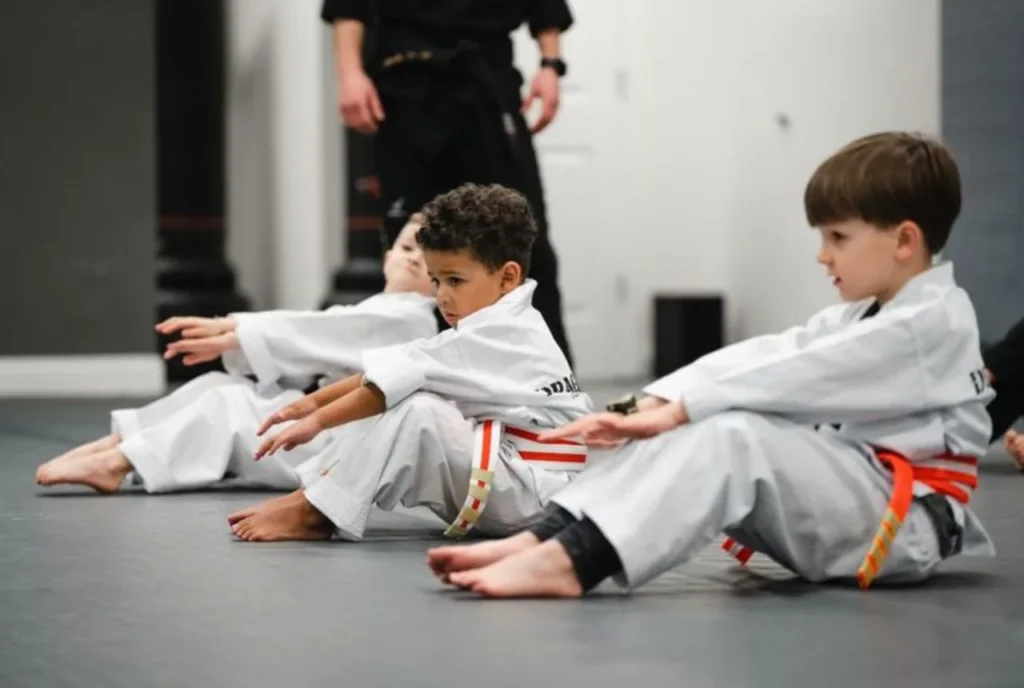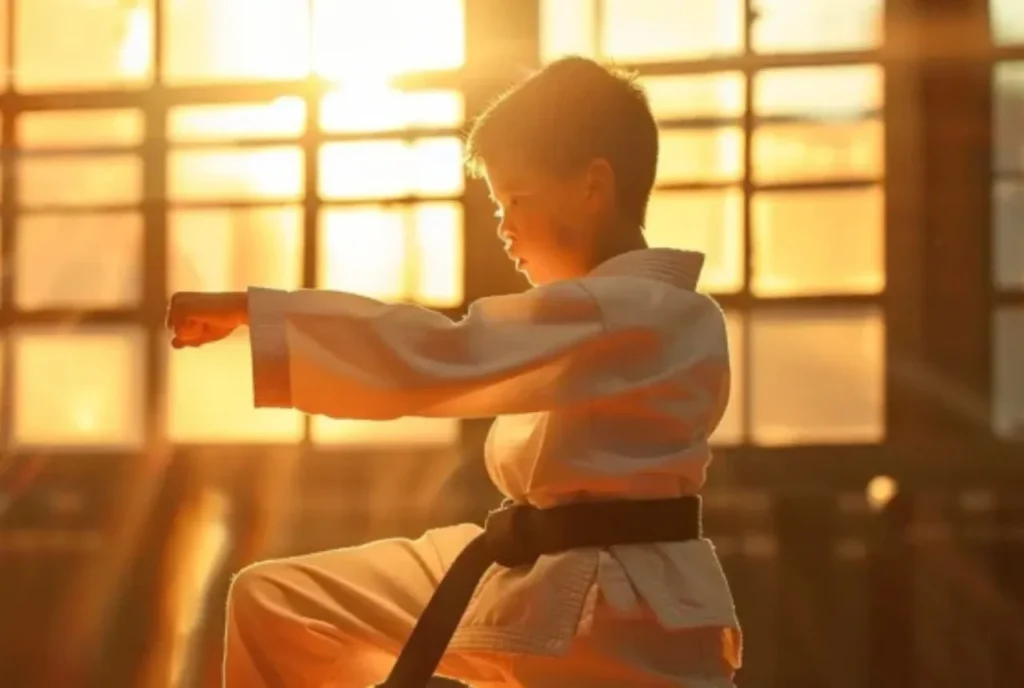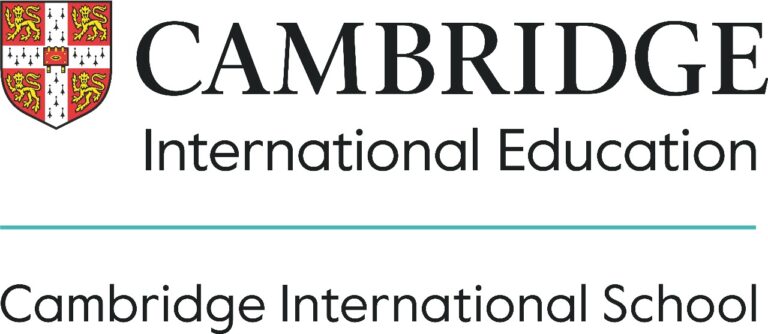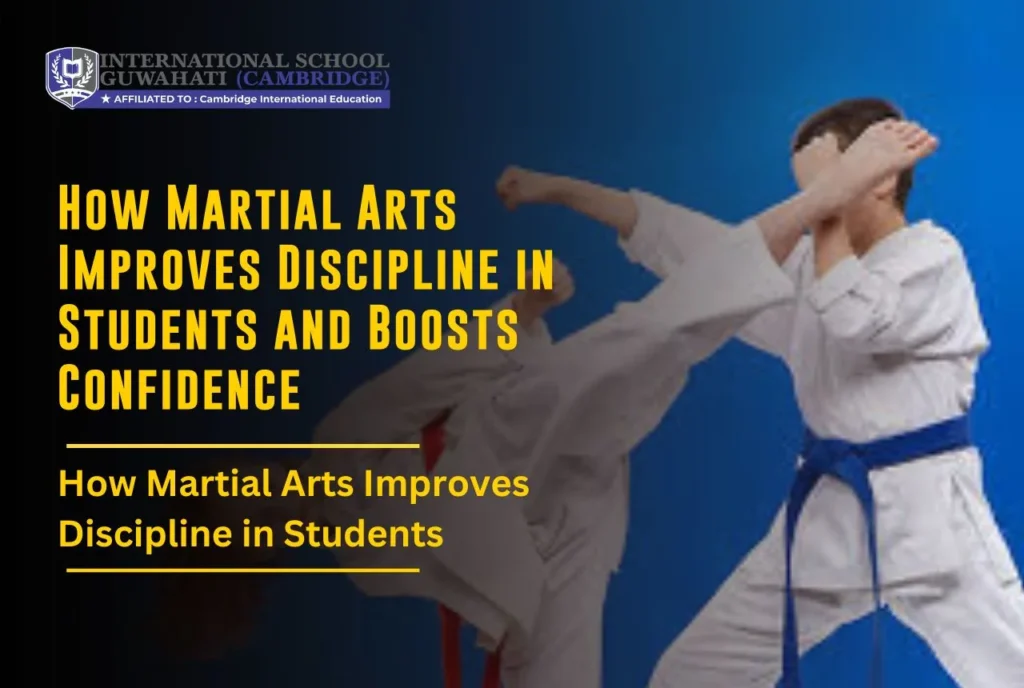![]()
In today’s classrooms, student discipline has become a rising concern. According to global education reports, over 60% of teachers report behavioral issues that disrupt learning. In this context, many schools are turning to unconventional yet effective solutions—one of the most impactful being martial arts. More than just physical training, martial arts is a complete system for developing mental focus, emotional control, and personal responsibility.
In this blog, we explore how martial arts improves discipline in students through six effective methods that build confidence, boost resilience, and foster respect.
Cambridge International School Guwahati, a top-tier IGCSE institution, has embraced martial arts as part of its character-building framework. By focusing on core principles like self-control, goal setting, and leadership, martial arts equips students with lifelong skills.
Discover how structured training can transform student behavior and why schools should consider it a valuable tool for holistic education.
How Martial Arts Improves Discipline in Students: The Foundation
To understand how martial arts improves discipline in students, we must first define what discipline truly means. In education, discipline often relates to rules and consequences. In martial arts, however, discipline is intrinsic—rooted in self-control, respect, and continuous self-improvement.
Research has shown that martial arts significantly improve behavior and academic performance. A study published in the Journal of Adolescence revealed that students involved in martial arts programs demonstrated better classroom focus, emotional regulation, and reduced aggression.
Martial arts emphasizes punctuality, routine, and mindfulness—traits that transfer directly into a school setting. The belt-ranking system introduces students to measurable goals, encouraging patience, dedication, and perseverance.
Furthermore, martial arts is steeped in traditional values such as honor, humility, and respect. These values are reinforced through rituals like bowing, using respectful titles, and maintaining decorum.

The structured environment, combined with physical discipline, helps students develop strong mental habits. Over time, they learn to make thoughtful decisions and remain calm under pressure.
This comprehensive approach illustrates clearly how martial arts improves discipline in students by aligning mind and body for responsible action.
The Science Behind Martial Arts and Student Development
Understanding how martial arts improves discipline in students requires a look at the science behind it. Neurologically, martial arts enhances focus by strengthening the prefrontal cortex—the part of the brain responsible for decision-making and self-regulation.
Studies show remarkable progress in students with ADHD when martial arts is introduced. They display improved attention span, reduced impulsivity, and higher academic engagement.
Martial arts also aids in emotional regulation through controlled breathing, mindfulness, and repetition. It becomes a physical outlet for stress, anxiety, and frustration.
Physical conditioning builds stamina and resilience, which translates to better concentration and mental clarity in academic settings.
At Cambridge International School Guwahati, martial arts is integrated into a wider character-building curriculum. Here, students grow not just academically, but emotionally and socially.
Recent 2025 studies confirm that incorporating martial arts into education can significantly reduce behavioral issues—solidifying its role in how martial arts improves discipline in students.
6 Effective Methods to Boost Confidence and Responsibility
1. Structured Goal Setting and Achievement Systems
One key example of how martial arts improves discipline in students is through structured goal-setting. The belt-ranking system teaches children to set and achieve progressive targets.
Unlike competitive sports, martial arts emphasizes personal growth over comparison. This helps students focus on self-improvement rather than winning.
Each belt earned reflects dedication, consistency, and effort—qualities essential in both school and life. Celebrating these small victories fosters self-esteem and intrinsic motivation.
The practice of setting short- and long-term goals in martial arts also transfers into academic life, where students learn to break down large tasks into manageable steps.
This method instills discipline through repetition, accountability, and a sense of responsibility for personal growth.
2. Respect and Authority Recognition Training
Martial arts teaches students to respect instructors, peers, and themselves. Addressing teachers with titles like “Sensei” or “Sifu,” bowing before entering the dojo, and following rules are non-negotiable.
These habits show how martial arts improves discipline in students by instilling respect for authority figures, a trait that positively influences classroom behavior.
It also nurtures peer respect, as students must cooperate, listen actively, and support one another during training.
Learning cultural traditions further deepens appreciation for different value systems, making martial arts a medium of both personal and social development.
Such consistent exposure to etiquette and structure molds students into respectful, cooperative individuals both inside and outside the classroom.
3. Focus and Concentration Enhancement Techniques
Another crucial example of how martial arts improves discipline in students lies in its training methods that enhance focus. Forms or “Kata” require intense concentration and precise execution.
Students must be fully present—eliminating distractions and paying close attention to every movement and command. This mental discipline improves cognitive function and academic focus.
Martial arts is especially beneficial for students with attention challenges. The practice enhances memory, sequencing, and pattern recognition—skills that support academic performance.
By mastering focus in the dojo, students carry the same habits into the classroom, resulting in improved study habits and reduced distractibility.
4. Self-Control and Emotional Regulation Development
Controlled sparring, breathing exercises, and mindfulness practices in martial arts teach students to manage impulses and emotions effectively.
This is another strong example of how martial arts improves discipline in students, especially when it comes to handling peer pressure, exam stress, or interpersonal conflicts.
Students learn when to react, how to stay calm under pressure, and how to make reasoned decisions rather than emotional ones.
Over time, this training builds emotional intelligence and resilience. These are critical life skills that help students navigate both academic challenges and personal relationships with maturity and clarity.
5. Resilience Building Through Overcoming Challenges
In martial arts, failure is part of growth. Students routinely face tough physical and mental tasks that test their limits.
Overcoming these challenges builds grit and perseverance—key traits that define how martial arts improves discipline in students.
Learning a difficult move, enduring physical strain, or coming back after defeat helps students develop a growth mindset. They stop fearing failure and start embracing improvement.
This mindset is vital in academics, where resilience determines how students approach difficult subjects or recover from low grades.
The dojo becomes a safe space to fail, learn, and rise—preparing students for real-life setbacks.
6. Leadership and Social Responsibility Training
Martial arts encourages students to lead by example. Senior belts mentor junior ones, building responsibility, empathy, and communication.
By guiding others, students reinforce their own learning and grow into role models. This is a prime instance of how martial arts improves discipline in students through leadership development.
Dojo participation often extends to community outreach or team events—teaching civic responsibility and teamwork.
At Cambridge International School Guwahati, students are encouraged to participate in such leadership roles, fostering confidence and accountability early on.
These experiences help children develop the soft skills necessary for personal success and social harmony.
Real-World Applications and Academic Benefits
From improved classroom behavior to enhanced focus, the real-world benefits of martial arts training are undeniable. Students develop better time management, improved peer relationships, and higher academic performance.
It’s clear how martial arts improves discipline in students when we observe their transformation—more confident, respectful, and resilient learners.

Cambridge International School Guwahati has seen notable student success stories following martial arts participation, further validating its impact on education.
Whether it’s handling exam pressure or cooperating in group tasks, martial arts-trained students display maturity, leadership, and inner strength.
Conclusion and Implementation Recommendations
Martial arts is more than physical exercise—it is a life-shaping discipline. This blog has shown how martial arts improves discipline in students through focus, respect, emotional control, resilience, and leadership.
Parents and schools should consider enrolling children in structured martial arts programs that align with educational values.
Institutions like Cambridge International School Guwahati are leading by example, demonstrating how integrated martial arts can shape stronger, more responsible students.
By introducing martial arts early, we prepare children not just for exams, but for life. It’s time we embrace this powerful tool for building confident, capable young leaders.










